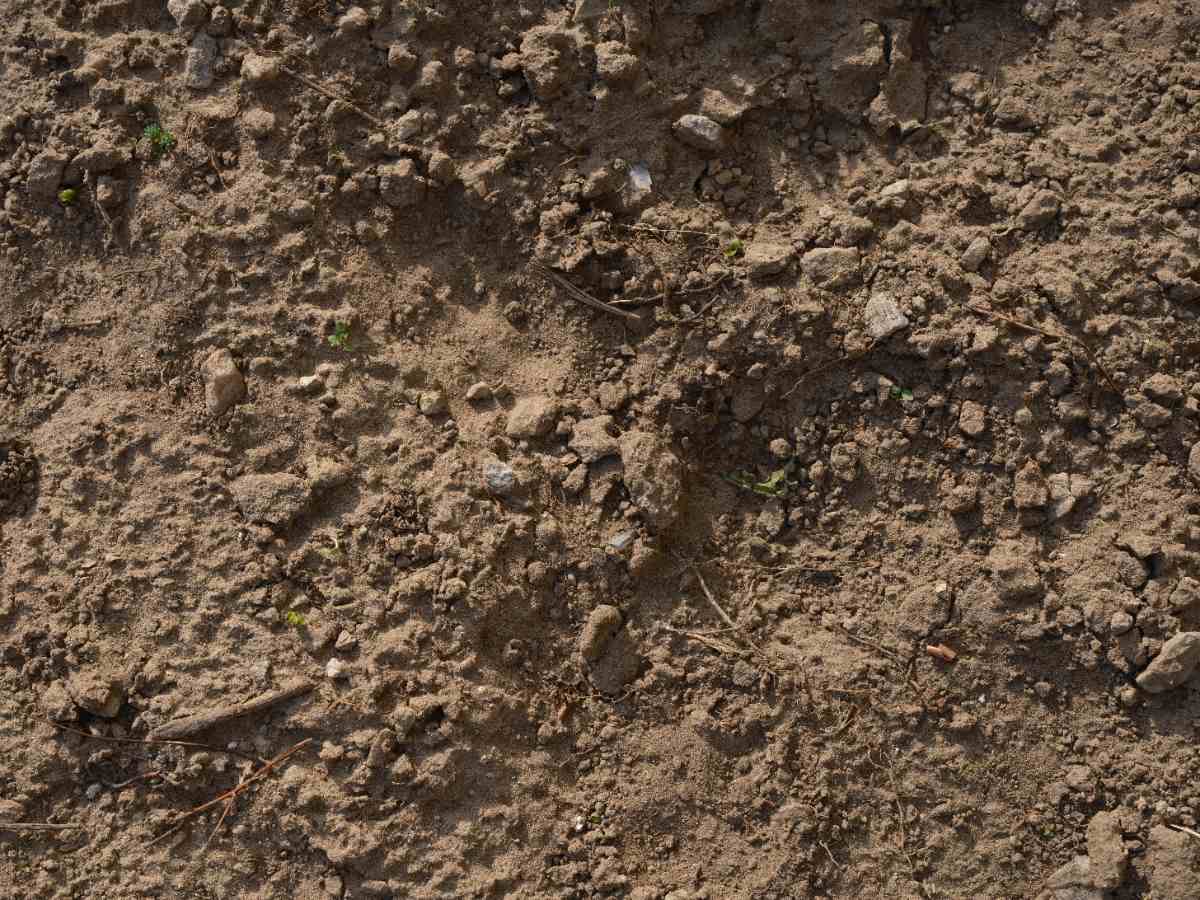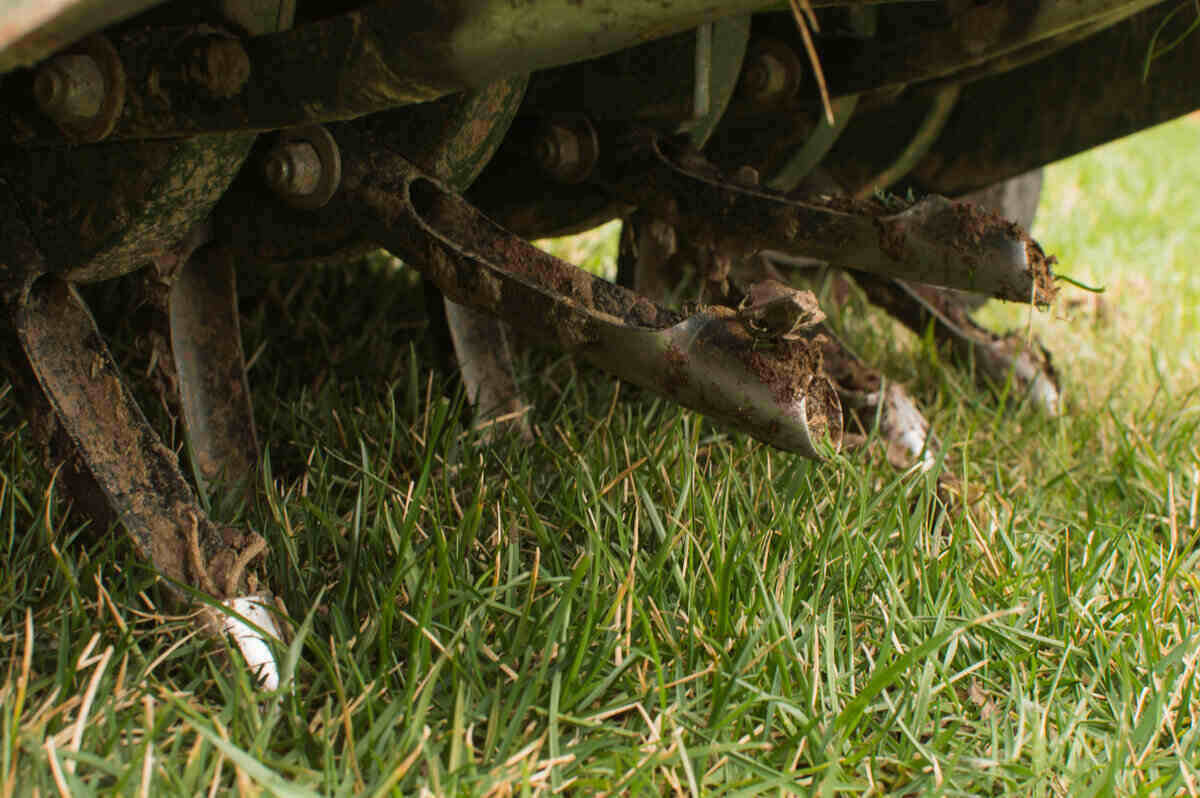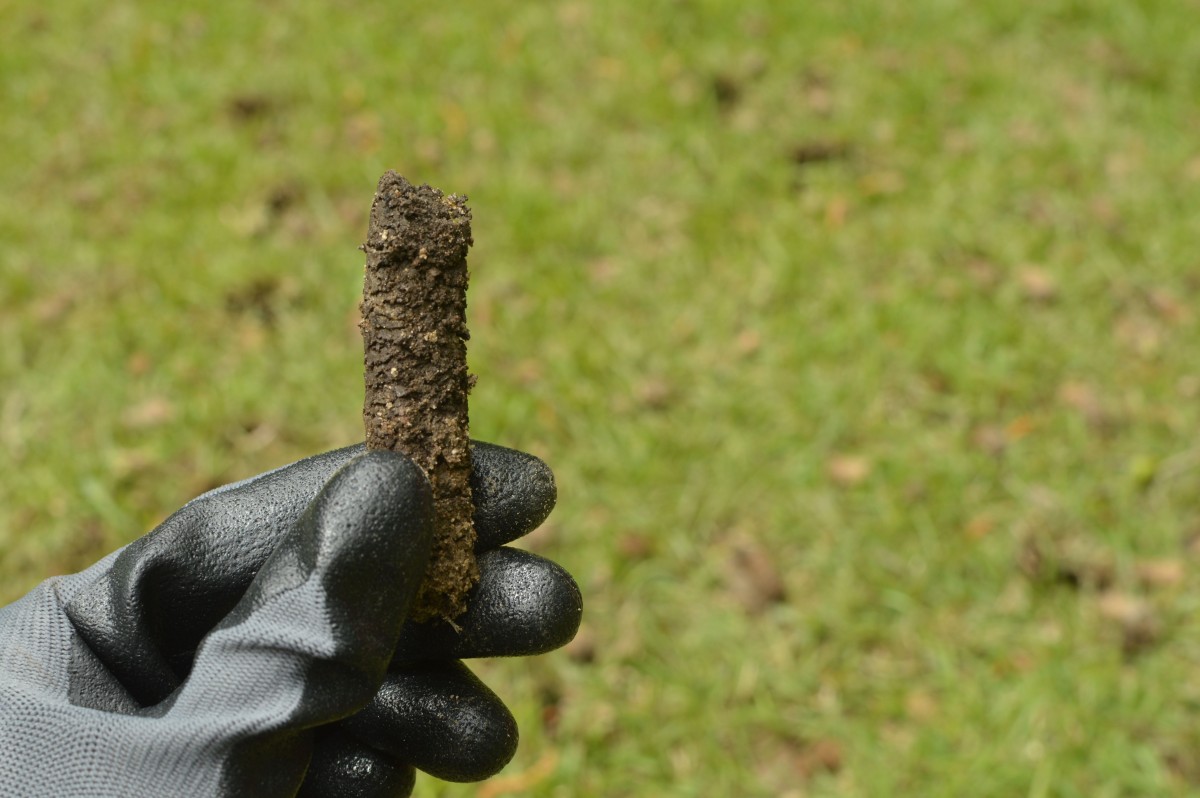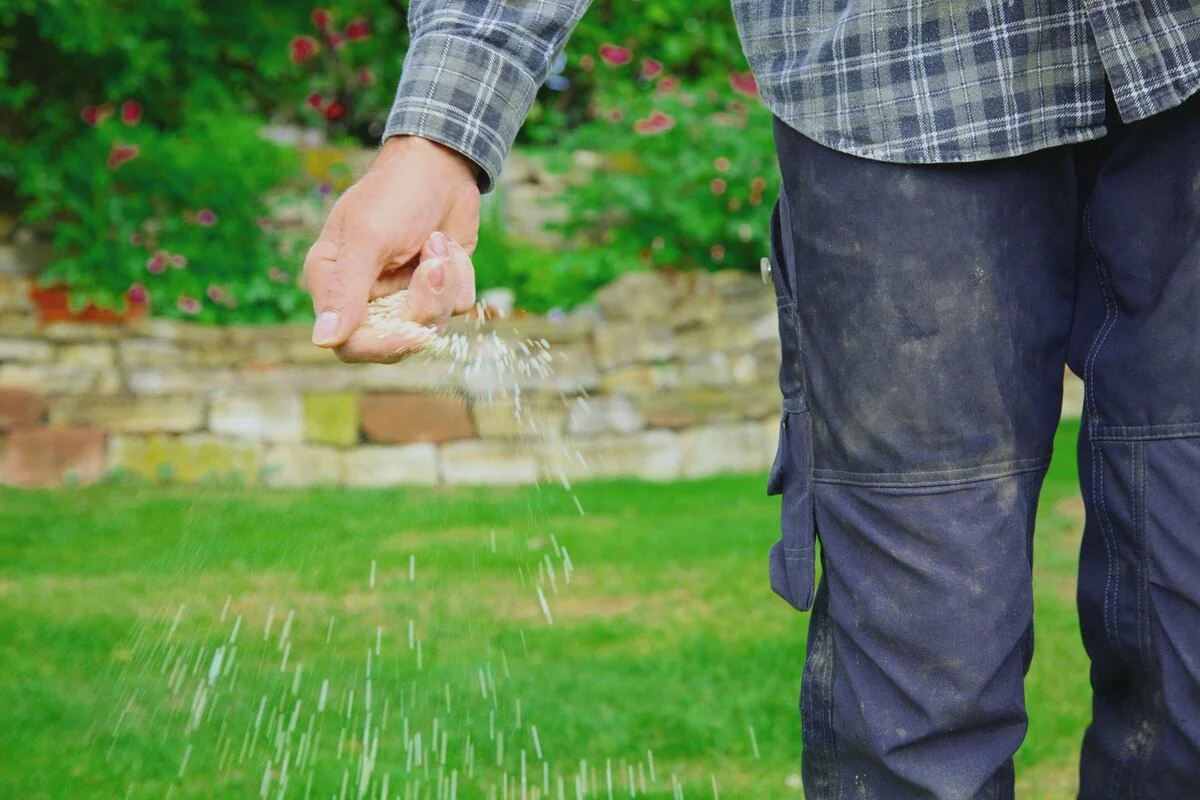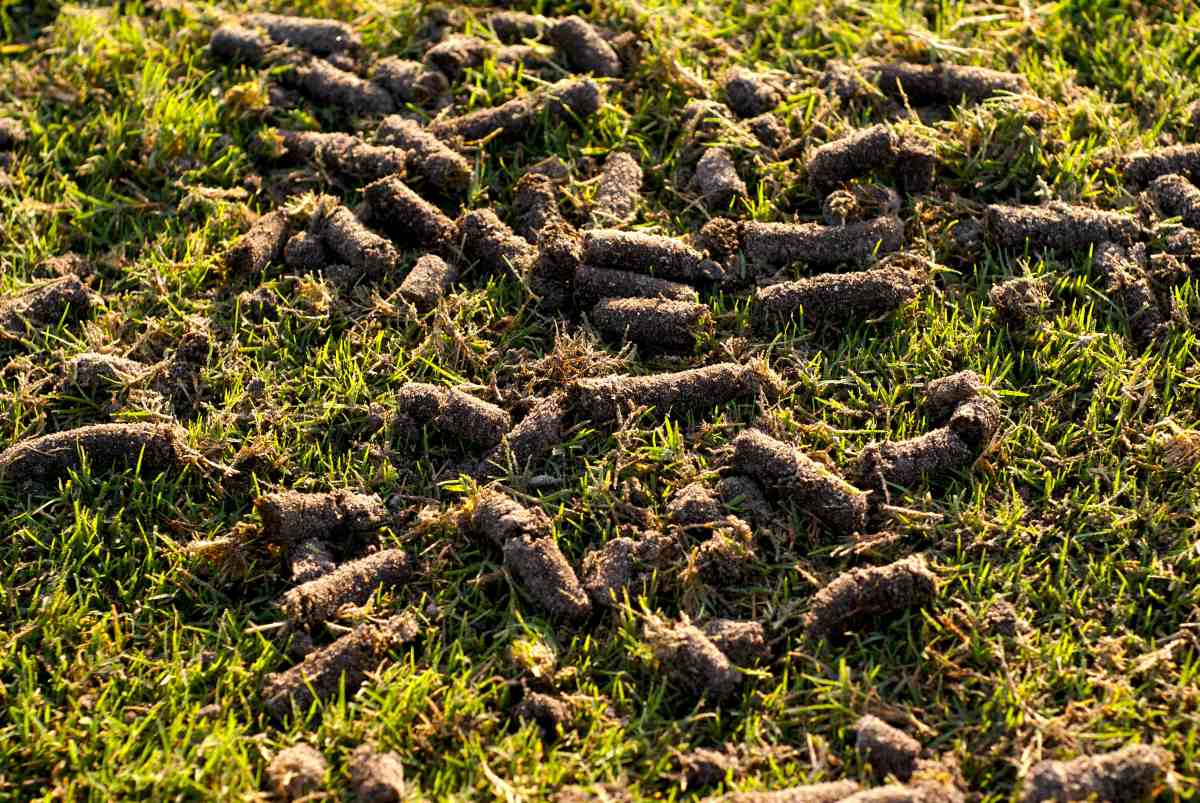
For maintaining a healthy lawn, understanding the basics of aeration is key. This guide to lawn aeration in Kentucky will walk you through the ins and outs of aerating your lawn with tips specific to Kentucky’s unique climate and soil conditions.
Your lawn should be aerated at least once a year if your soil is heavy and tends to become compacted. Whether you do it yourself or hire a pro is up to you! If DIY isn’t your style, LawnStarter can connect you with the best lawn aeration pros in Kentucky to save you the hassle of searching for someone on your own.
But if you’ve got a super green thumb or you’re a lawn care fanatic, here’s everything you need to know about aerating your lawn in Kentucky:
How to Aerate Your Kentucky Lawn in 5 Steps
Lawn aeration is essential for the health of your lawn. But first, do you know what lawn aeration is? If not, hop over to our video explaining what aeration is and why your lawn needs it.
Once you understand the concept of lawn aeration, let’s dive into the best steps Kentucky homeowners can follow to aerate their lawns.
1. Identify Your Grass Type and the Best Time to Aerate
Before you can aerate your lawn, you need to know what grass type you have and when it’s growing actively. When performed during the grass’s active growing period, aeration promotes root growth, fertilizer absorption, and overall lawn health.
Because most of the state is within what’s called the transition zone, common grass types for Kentucky include both cool-season and warm-season grasses, and the best time to aerate is different for each:
- For cool-season grasses like Kentucky bluegrass and tall fescue, the best time to aerate is autumn. This is when the grass grows most actively and can recover from the stress of aeration.
- For warm-season grasses like Bermudagrass and Zoysiagrass, late spring to early summer is the best time to aerate. Don’t wait until the middle of summer when the dry, scorching Kentucky heat can make it harder for your grass to recover.
If you live in northern, central, or eastern Kentucky – in the Plateaus or the Bluegrass region – you most likely have cool-season grass on your lawn. In humid subtropical western Kentucky – around the Jackson Purchase region – warm-season grasses are more common.
2. Choose the Right Tool for Lawn Aeration
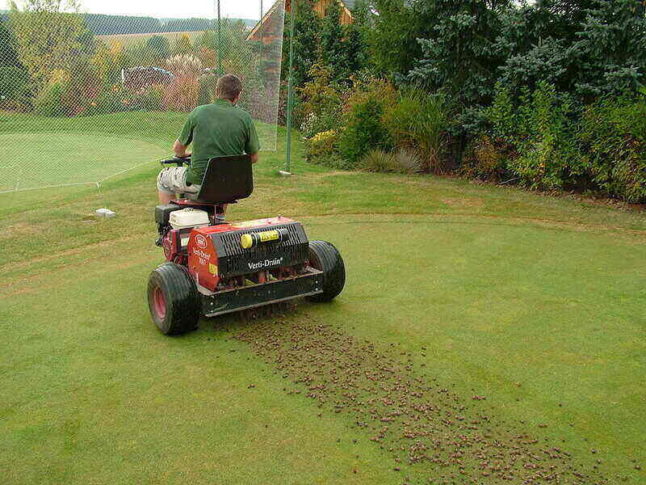
When choosing what kind of tool you’re going to use to aerate your lawn, you have to decide between the cheaper, easier option and the more effective option:
- More effective – Core/Plug Aerator: A core or plug aerator is a mechanical aerator. It extracts 2 to 3-inch plugs of soil from your grass, allowing for improved airflow and nutrient absorption to the root zone. You can purchase your own core aerator or rent one from a home improvement store, such as Lowe’s or Home Depot.
- Cheaper and Easier – Spiked Aeration Shoes or Manual Aerator: Instead of pulling out plugs of soil, the spikes on spiked aeration shoes and manual aerators simply poke holes in the ground. While this can sometimes be enough to loosen up the soil, it also runs the risk of compacting the soil even more. Spike aeration is a lot easier, but it’s not as reliable as core aeration.
Because renting a core aeration machine can be just as expensive as hiring a professional aeration service, many Kentucky homeowners decide to leave this job to the pros.
3. Prepare Your Lawn for Aeration
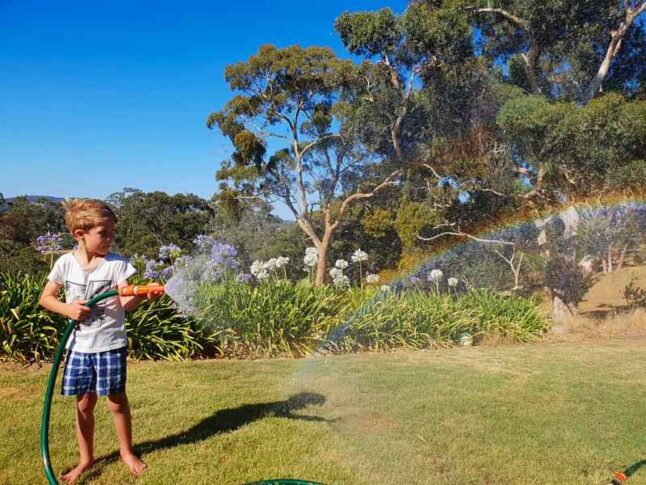
Before you begin the aeration process for your Kentucky lawn, there are a few procedures you must follow to achieve the best results:
- Mowing: Begin by mowing the lawn down to about 1.5 to 2 inches – just be sure not to cut more than ⅓ of the grass’s height at once. If you have longer grass, that might mean a few mowing sessions before your lawn is ready for aeration.
- Watering: Water your lawn well a day or two before aeration. Moist soil permits the aeration tool to penetrate the soil easily. However, the lawn should not be wet and soggy when you aerate.
- Marking Utilities: Locate and designate any underground utilities by calling 811 before you begin aerating. If you have a sprinkler system, mark the sprinkler heads with flags so you can be sure to avoid them.
- Clearing Debris: Remove any debris from the surface of your grass, such as sticks, stones, grass clippings, or huge clumps of thatch. A clear path will make aeration quicker, easier, and more effective.
Once you’ve prepared the lawn, it’s time to get your chosen aeration tool ready to work.
4. Choose Your Aeration Method and Cover the Whole Lawn
There are three methods you can use to aerate your Kentucky lawn. We’ve already discussed two: core aeration, which uses a core aeration machine, and spike aeration, which uses spiked shoes or a manual aerator. The third is liquid aeration, which involves applying a liquid soil conditioner to your lawn (read about its effectiveness in our article, Does Liquid Lawn Aeration Work?).
Though core aeration is generally the most effective, all three methods can work well in Kentucky. That’s because most of the soil in Kentucky – particularly the state soil, called Crider – already drains pretty well and isn’t prone to severe compaction.
Here’s how to get the best results out of each aeration method.
Core Aeration
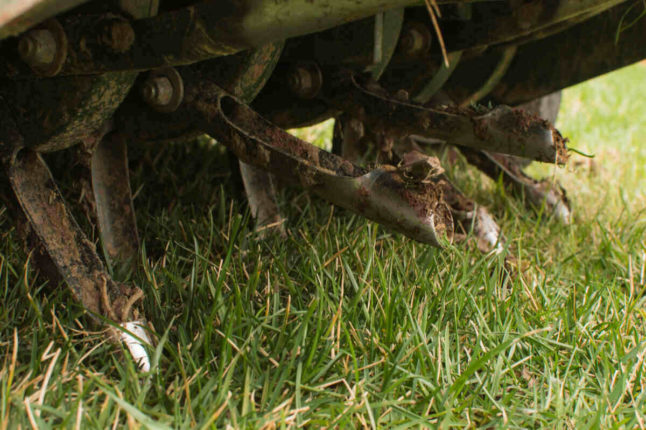
The best and most common method – the one the pros use – is core aeration. With your core aerator machine, start at the edge of your lawn. Push the machine across the grass the same way you would a lawn mower.
Cover the whole lawn from one edge to the other. You should see plugs of soil left on your grass. If your soil is severely compacted, you can push the machine across the lawn a second time, this time perpendicular to your first pass. When you’re finished, leave the soil cores on the lawn’s surface. They will degrade over time and contribute to the general health of the soil.
Spike Aeration
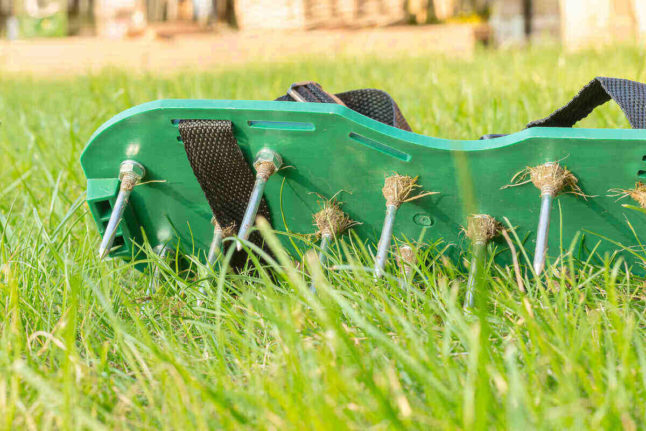
If you’re on a budget, you can purchase spike aeration shoes or a manual spike aerator for under $50. A manual aerator will usually be more effective than the shoes. You can also use a different spiked tool, such as a pitchfork, if you already have one handy.
Begin at the very edge of your lawn to ensure full coverage.
If you’re using aeration shoes, walk across your lawn slowly and evenly in parallel lines. Be sure that you feel the spikes sink into the ground with each step. Your strides should be short so you don’t miss any spots.
If you’re using a manual aeration tool, pitchfork, or something similar, place it over the area you want to aerate and push the tines or spikes down into the ground. Push down forcefully so the spikes reach 2 to 3 inches into the soil. Cover the whole lawn in parallel lines, pushing the spikes into the ground about every three inches.
Whichever manual tool you use, it’s a good idea to do a second pass across the lawn perpendicular to the first one. This helps prevent a patchy lawn, which is what can happen when you aerate parts of the soil but not others.
Liquid Aeration
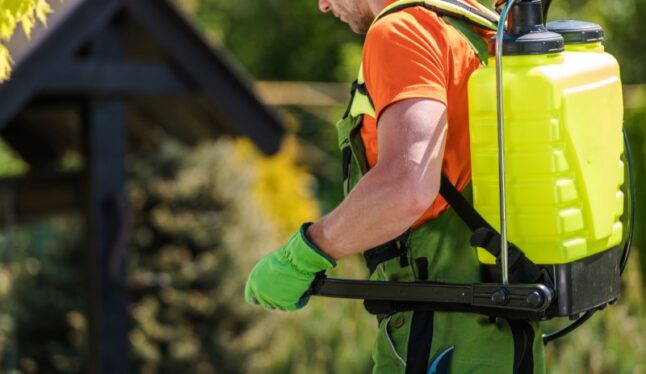
Purchase a liquid aeration solution online or from a local home and garden store. Read the instructions on your chosen product to see how it should be applied. Some will attach directly to the end of your garden hose, while others will have to be diluted with water and applied with a garden pump sprayer.
Spray the diluted solution evenly across your entire lawn, beginning at one edge and walking slowly to the other in parallel lines. Each line you spray should overlap with the one before it to ensure you don’t miss any spots.
5. Post-Aeration Care and Maintenance
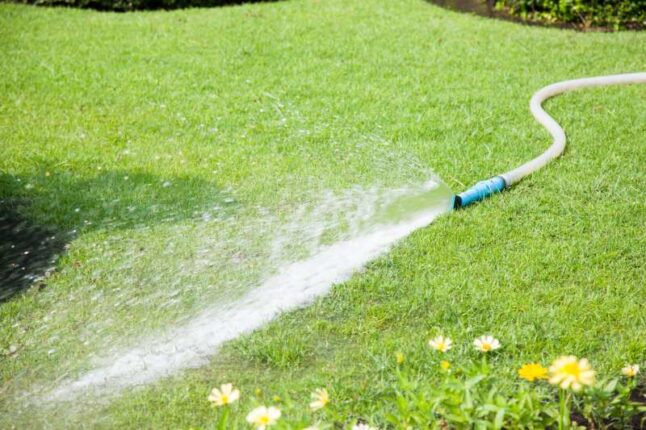
Following aeration, it is critical to give adequate care and maintenance to optimize the benefits for your lawn. Follow these post-aeration lawn care tips:
- Leave soil cores: If you have performed core aeration, leave the soil cores on the grass. In Kentucky, where the soil is clay-heavy in some areas, the disintegration of soil cores helps to improve soil structure and drainage over time. Allow the cores to naturally decompose, supplying essential nutrients to the soil.
- Water thoroughly: Water your grass thoroughly after aeration to ensure the soil has enough moisture to recover and decompose the soil cores – this is especially important in a dry Kentucky summer. However, don’t water yet if rain is forecasted in the next 24 hours.
- Fertilize: Following aeration, use a balanced fertilizer to replace nutrients and promote healthy grass growth. Choose a fertilizer with a nitrogen-phosphorus-potassium (NPK) ratio appropriate for your grass type. Our guide to lawn fertilization in Kentucky can help you choose the right fertilizer for your lawn.
- Overseed: If your Kentucky lawn has thin or bare patches, right after aeration is a great time to overseed new grass. The holes left over from aeration help grass seeds germinate faster and more effectively.
- Mow high: To avoid straining the grass, adjust the mowing height slightly higher than usual soon after aeration. Lower the mowing size gradually as the turf recovers.
- Watch out for weeds: Just like aeration helps grass seeds germinate, it helps weed seeds germinate, too. Our guide to weed control in Kentucky can help you eliminate weeds that start to take over after aeration or prevent them in the first place.
- Soil Amendments: Kentucky soils vary by region, with clay soils in some parts and sandy or loamy soils in others. Consider applying location-specific soil amendments to improve your soil’s texture and prevent compaction in the future. Your local UKY Cooperative Extension Service can help you choose the right soil amendments for your area.
By following these tips before, during, and after aerating your lawn, you can improve your soil’s health and ensure your lawn gets the nutrients it needs to grow thick and green this season.
Professional Lawn Aeration Services in Kentucky
Does all that sound like too much work for you? Connect with a Kentucky lawn aeration pro on LawnStarter and get a free quote to find out how much it would cost to hire someone to aerate your lawn for you.
Hiring a professional for lawn aeration typically costs between $75 and $225 based on national averages. Prices in your area of Kentucky may be higher or lower depending on the cost of living and local demand for lawn care services.
The cost also depends on criteria such as the size of your lawn, the type of aeration used, and other factors. To find out exactly how much lawn aeration would cost for you, get quotes from a few LawnStarter pros or see our detailed lawn aeration cost guide.
FAQ About Lawn Aeration in Kentucky
Over-aerating your lawn can hurt it by disrupting its root system. Too many passes with an aerator or closely spaced holes can cause tension and damage.
Absolutely! Integrating lawn aeration with other treatments can improve your lawn’s overall health and look. Aeration, for example, can be scheduled before overseeding to enhance seed-to-soil contact and boost germination rates. Aeration can also be followed by fertilization to nourish the grass and enhance its restoration and growth.
Lawns that get a lot of foot traffic from kids or pets may benefit from more frequent aeration. Increased activity can add to soil compaction, demanding more frequent aeration to maintain healthy soil conditions.
Lawn aeration in Kentucky takes time to show results. Depending on the condition of your lawn and the care you provide after aeration, you may see improvements in root formation, better nutrient absorption, and healthier grass growth within a few weeks following aeration.
If the soil in your garden is compacted, yes, you should aerate the soil around your plants, too. Just like grass, other plants need oxygen, water, and nutrients to reach their roots, which can only happen when the soil is loose.
However, some plants require less maintenance than others and may be able to survive in compacted or nutrient-poor soils. See our top native plants for Kentucky to find the perfect low-maintenance plants for your landscape.
Final Thoughts
Lawn aeration loosens the soil to help grass roots get what they need for your grass to grow healthy and strong. It helps your lawn breathe and absorb essential nutrients. We recommend aerating your Kentucky lawn – or hiring someone to do it for you – at least once a year.
LawnStarter is here to help you find the best aeration pros in Kentucky, so you can rest assured your lawn is in good hands, whether you live in Louisville, Lexington, or anywhere else in the Bluegrass State.
Main Photo Credit: ArtBoyMB / Canva Pro / License

